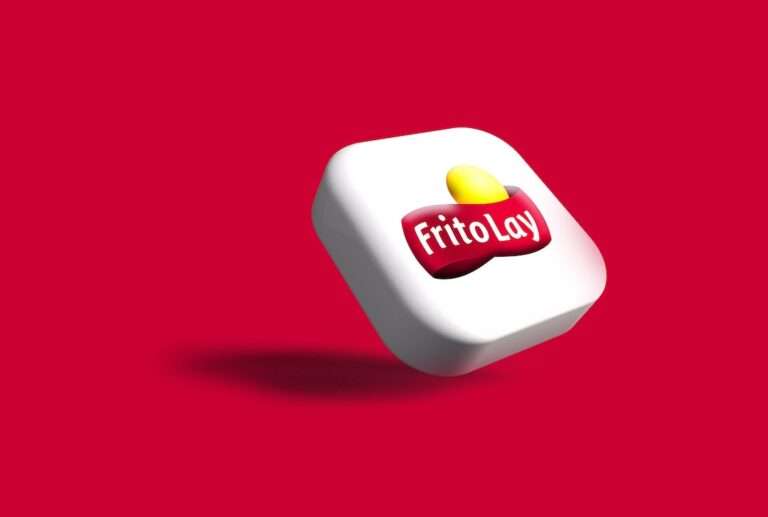Product Design Symbolism – Everything You Need To Know
Symbolism in product design is a powerful tool that can greatly enhance the appeal and success of a product. Symbolism refers to the use of symbols or visual elements that represent something else, often carrying deeper meanings or associations. These symbols can evoke emotions, convey messages, and create connections with consumers. In today’s competitive market, where consumers are constantly bombarded with countless products, symbolism plays a crucial role in capturing attention, creating brand identity, and influencing consumer behavior.
Understanding the Role of Symbolism in Product Design
Symbolism is a concept that has been used in various forms of art and communication throughout history. In product design, symbolism is used to convey messages and meanings beyond the physical attributes of the product itself. It adds depth and richness to the design, making it more engaging and memorable for consumers.
For example, the Apple logo is a simple symbol of an apple with a bite taken out of it. This symbol has become synonymous with the brand and represents innovation, creativity, and simplicity. It is instantly recognizable and evokes positive emotions in consumers.
Another example is the Nike swoosh logo. The swoosh represents movement and speed, which aligns with Nike’s brand identity as a sports and athletic company. The symbol has become iconic and is associated with high-performance products.
The Importance of Symbolic Elements in Product Design
Symbolic elements in product design can greatly enhance a product’s appeal and make it more desirable to consumers. These elements can create emotional connections, convey messages, and differentiate a product from its competitors.
For instance, luxury brands often use symbolic elements to convey exclusivity and status. The use of gold or silver accents, intricate patterns, or specific motifs can instantly communicate luxury and sophistication to consumers.
Similarly, eco-friendly products often incorporate symbolic elements that represent sustainability and environmental consciousness. The use of earth tones, leaf motifs, or recycled materials can convey a message of eco-friendliness and attract consumers who prioritize sustainability.
How Symbolism Enhances Brand Identity in Product Design
Symbolism plays a crucial role in creating a strong brand identity. By using symbols that are associated with certain values or characteristics, companies can shape how consumers perceive their brand.
For example, the Coca-Cola logo is a symbol that represents happiness, joy, and togetherness. The brand has successfully used this symbol to create a strong emotional connection with consumers and position itself as a provider of positive experiences.
Similarly, the Starbucks logo, which features a twin-tailed mermaid, represents the company’s commitment to quality, craftsmanship, and the art of coffee. The symbol has become synonymous with the brand and instantly communicates Starbucks’ values to consumers.
The Psychology of Symbolism in Product Design
Symbolism has a profound impact on consumer behavior. It can influence how consumers perceive a product, make purchasing decisions, and form emotional connections with brands.
For example, the use of symbols associated with trust and reliability can instill confidence in consumers and make them more likely to purchase a product. Symbols such as checkmarks or seals of approval can communicate quality and credibility.
On the other hand, symbols associated with excitement and adventure can create a sense of anticipation and desire in consumers. Symbols such as lightning bolts or arrows can convey speed and energy, making a product more appealing to those seeking excitement.
Incorporating Cultural Symbols in Product Design

Cultural symbols can be powerful tools in product design, as they resonate with specific groups of people and evoke shared meanings and experiences. By incorporating cultural symbols into their designs, companies can connect with consumers on a deeper level and tap into their cultural identities.
For example, the use of traditional patterns or motifs from a specific culture can create a sense of familiarity and pride in consumers from that culture. It can also attract consumers who appreciate and value cultural diversity.
One example of this is the use of traditional African prints in fashion and home decor products. These prints have gained popularity worldwide and are associated with vibrancy, creativity, and cultural heritage.
The Use of Color Symbolism in Product Design
Color symbolism is another powerful tool in product design. Different colors evoke different emotions and associations, and companies can use this knowledge to create specific moods or convey certain messages through their products.
For example, the color red is often associated with passion, energy, and excitement. It can be used to create a sense of urgency or attract attention to a product.
On the other hand, the color blue is often associated with calmness, trust, and reliability. It can be used to convey a sense of professionalism or create a feeling of security in consumers.
How Symbolism Can Communicate Product Features and Benefits
Symbolism can be used to communicate a product’s features and benefits in a more engaging and memorable way. By using symbols that represent these features or benefits, companies can make their products more relatable and easier to understand for consumers.
For example, a toothpaste brand may use a symbol of a sparkling white smile to communicate the whitening effect of their product. This symbol instantly conveys the benefit of using the toothpaste without the need for lengthy explanations or technical jargon.
Similarly, a fitness tracker may use symbols of a heart or running shoes to communicate its health-tracking capabilities. These symbols make it easier for consumers to understand how the product works and what benefits it offers.
The Role of Symbolism in Emotional Design
Symbolism plays a crucial role in emotional design, which focuses on creating products that elicit positive emotions and forge emotional connections with consumers. By using symbols that resonate with consumers on an emotional level, companies can create products that are more meaningful and memorable.
For example, a children’s toy company may use symbols of laughter or happiness to create products that bring joy to children. These symbols can evoke positive emotions and create a sense of happiness and excitement in children.
Similarly, a luxury perfume brand may use symbols of elegance or sensuality to create products that make consumers feel sophisticated and desirable. These symbols can evoke emotions of confidence and allure, making the product more appealing to consumers.
The Ethics of Symbolism in Product Design
While symbolism can be a powerful tool in product design, it is important for companies to consider the ethical implications of using symbols. Symbols can carry different meanings and associations for different people, and companies must be mindful of how their use of symbols may be perceived by different groups.
For example, using religious symbols in a way that is disrespectful or offensive can lead to backlash and damage a company’s reputation. Similarly, using symbols associated with cultural appropriation can be seen as insensitive and disrespectful.
Companies must also be transparent and honest in their use of symbols. Misleading or deceptive use of symbols can erode consumer trust and lead to negative perceptions of the brand.
The Future of Symbolism in Product Design and Innovation
As technology continues to advance and consumer preferences evolve, the role of symbolism in product design is likely to evolve as well. Emerging trends in symbolism include the use of augmented reality (AR) and virtual reality (VR) to create immersive experiences that incorporate symbolic elements.
For example, AR technology can be used to overlay digital symbols onto physical products, creating interactive and engaging experiences for consumers. VR technology can transport consumers into virtual worlds where they can interact with symbolic elements in new and exciting ways.
Additionally, as sustainability becomes an increasingly important consideration for consumers, the use of symbolic elements that represent eco-friendliness and sustainability is likely to become more prevalent in product design.
Symbolism plays a crucial role in creating successful products. It enhances the appeal of products, creates emotional connections with consumers, communicates messages and meanings, and helps shape brand identity. By understanding the role of symbolism in product design and incorporating it effectively, companies can create products that stand out in the market and resonate with consumers on a deeper level. As technology and consumer preferences continue to evolve, the use of symbolism in product design is likely to become even more important in the future.
If you’re interested in exploring the symbolism behind various elements, you might also enjoy reading about the symbolism of a snake. Snakes have long been associated with different meanings across cultures and religions. From representing transformation and rebirth to symbolizing wisdom and healing, the snake holds a significant place in symbolism. To delve deeper into this fascinating topic, check out this article on Symbolism Hub: Symbolism of a Snake.
FAQs
What is product design symbolism?
Product design symbolism is the use of visual elements, such as colors, shapes, and patterns, to convey meaning and evoke emotions in a product’s design.
Why is product design symbolism important?
Product design symbolism is important because it can help a product stand out in a crowded market, communicate its intended purpose or message, and create an emotional connection with consumers.
What are some common symbols used in product design?
Common symbols used in product design include arrows (to indicate direction or movement), circles (to represent unity or wholeness), triangles (to suggest stability or strength), and hearts (to convey love or affection).
How can product design symbolism be used in branding?
Product design symbolism can be used in branding by incorporating consistent visual elements across all products and marketing materials, such as a specific color palette or logo design, to create a recognizable and memorable brand identity.
What are some examples of product design symbolism in popular products?
Examples of product design symbolism in popular products include the Apple logo (an apple with a bite taken out of it, symbolizing knowledge and creativity), the Nike swoosh (representing movement and speed), and the Coca-Cola script (evoking nostalgia and tradition).





